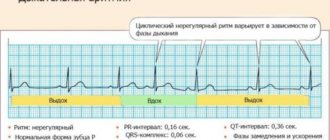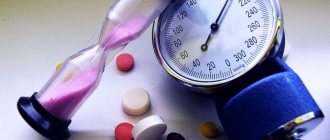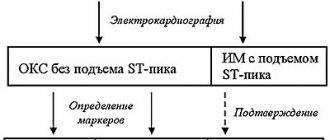Home — For the public
- Map of medical organizations
- Vaccination
- Clinical examination
- Fluorography
- Addresses and opening hours of clinics
- Emergency rooms
- Oncology
- Where to take an HIV test
- Healthy child's office
- Services
- Prevention of CVD
- Disease Prevention
- World Patient Safety Day
- Newspaper "Medical News"
- specialist
- School of Health
— Disease prevention
- HIV infection
- All about vaccination
- All about proper nutrition
- Hepatitis
- Flu
- Dementia
- Schoolchildren's health
- STD
- Tick-borne encephalitis
- Whooping cough
- Measles
- Legionellosis
- Meningococcal infection
- Oncology
- Acute intestinal infection
- Pediculosis
- First aid
- Pneumococcal infection
- Pneumonia
- Prevention of rabies
- Dependency Prevention
- Rotavirus infection
- Diabetes
- Cardiovascular diseases
- Injuries
- Tuberculosis
- Tularemia
- Physical activity
- Obstructive pulmonary disease
- Exotic infections
- Ecology
- Why is swimming in ponds dangerous?
— Cardiovascular diseases — Nutrition for cardiovascular diseases
Can a certain diet improve the condition of a person with heart disease or is this another myth? To answer the question, it is enough to recall WHO data that lifestyle has up to 50% of the impact on health. And diet is as important a part of lifestyle as physical activity and the presence or absence of stress. A diet for cardiovascular diseases (or CVD) helps maintain normal body weight, protects against the development of diabetes mellitus, and increased levels of “bad” cholesterol. Every person can adjust their diet and monitor it.
Changes in the body and principles of diet
Atherosclerosis and hypertension are the main causes of heart attacks and strokes. What changes occur in the body during the development of cardiovascular diseases?
Increased pressure “wears out” the walls of blood vessels. They become more dense. Aneurysms (expansion of the lumen) occur; the wall in these places becomes thinner and can easily “rip” when blood pressure fluctuates.
The process of formation of atherosclerotic plaques on the walls of blood vessels begins already in infancy, but their size and stability depend on age, lifestyle, and hereditary characteristics. The trend towards a negative attitude towards cholesterol is already a thing of the past, but the stereotype that “it’s better without it” is still alive. Endocrinologists say that about 85% of cholesterol circulating in the blood is synthesized in the body by liver cells and only about 15-20% comes from outside.
Fats are not only a “filler” for cholesterol plaques, but also a material for the construction of all cell membranes and hormones. These are vitamins and natural protection of internal organs from displacement (shock absorption), and the person himself from hypothermia. This means that a complete abstinence from animal foods may not improve, but worsen, your health. But what can be changed? You can influence the amount and composition of fats entering the body.
Speaking about damage to the walls of blood vessels during hypertension and atherosclerosis, we must remember the proteins collagen and elastin. They are responsible for their firmness and elasticity, the smoothness of the inner layer of the vascular wall. The development of atherosclerosis leads to the fact that the walls of blood vessels become more rigid, blood flow decreases, and the heart “has” to put in more effort to push through the required volume. Blood supply deteriorates, the load on the heart increases. The process of restoration of the vascular wall is associated not only with a sufficient amount of protein in food, but also with the presence of ascorbic acid, which takes part in the synthesis of its body structures.
The body needs carbohydrates, first of all, as a quick way to replenish energy. But the excess amount of sugars does not “go away”: they become material for fats. A person’s weight increases, and along with it, the load on the heart increases.
According to the latest WHO recommendations, the amount of table salt (or sodium chloride) that a person receives per day should not exceed 5 g. A larger amount leads to edema and increased stress on the heart. Unfortunately, people are accustomed to considering only the contents of a salt shaker as salt. They forget that sodium chloride can easily “hide” in mayonnaise, ketchup, a piece of sausage, or even in cream cheese.
Having listed the changes that occur in tissues, we can say that the diet for the heart and blood vessels must meet the following requirements:
- Supply the body with all nutrients.
- Do not go beyond the recommended daily caloric intake.
- Prevent fluid retention (edema).
- Contain a minimum amount of “harmful” fats.
- Provide the body with enough protein.
Vitamin therapy, the intake of minerals and trace elements are justified only in cases where the diet does not provide them with food in sufficient quantities.
Potassium and magnesium deserve special attention: these ions have a beneficial effect on the heart and “calm” the nervous system. This means that you need to take care to include foods rich in them in your diet.
What factors influence cardiovascular health?
The state of the cardiovascular system is influenced by many factors, including:
- ecology;
- heredity and genetic predisposition;
- diet;
- Lifestyle;
- nature of work.
A person cannot influence many factors, but everyone can monitor their diet. At the same time, this factor plays a key role, because proper nutrition can correct many hereditary and genetically determined problems, while at the same time, lack of attention to healthy food and lifestyle can negate the positive innate inclinations of the body.
What can and cannot be eaten by patients with heart disease?
How can dietary requirements relate to general nutritional recommendations? Endocrinologists describe the diet as being as close as possible to the well-known Mediterranean diet (green salads, vegetables, seafood, olive oil). Cardiologists lean on treatment table No. 10.
In general, the diet for a patient with CVD must meet the following requirements:
- Sufficient amounts of plant and animal protein foods. Preference should be given to fish and other seafood, including them in the diet 2-3 times a week.
- Refusal of fatty and fried foods, products made from white flour.
- Include at least 500 g of fresh vegetables and fruits in your daily diet.
- Refusal of foods high in salt and trans fats.
Healthy foods for the heart and blood vessels
Dividing familiar dishes into “healthy” and “harmful”, a person with heart disease should make a list of products for his new diet. It will include:
- foods rich in potassium: dried apricots, bananas, baked potatoes (with skin), tomatoes;
- nuts and dried fruits;
- berries and fruits: lemon and all citrus fruits, viburnum, pomegranate, grapes;
- non-starchy vegetables (pepper, radish, cucumber, zucchini, eggplant, pumpkin);
- aromatic herbs and green salads;
- Natural fermented milk products (without sugar, fillers, flavors), cottage cheese with a fat content of 2-5%;
- fish, including fatty varieties (mackerel, salmon);
- products that are sources of essential omega-6 fatty acids or oils made from them (sesame, avocado, olives, peanuts, hazelnuts).
When asked what foods help lower cholesterol, naturopaths list: carrots, tomatoes, nuts, peas, salmon and garlic. Perhaps the benefits of some of them are exaggerated.
Harmful products
Having compiled a list of recommended foods, cardiologist patients should also remember well what they should not eat if they have CVD. The following are subject to exclusion or significant limitation:
- alcohol;
- some fats;
- salt.
Alcoholization is closely associated with the risk of CVD. But does this mean that a patient with uncomplicated hypertension should completely give up wine? No, you shouldn't. Damage to health occurs from alcohol abuse. Periodic consumption of 25-30 ml of strong alcohol, 100 ml of wine or 280 ml of beer (per day) is acceptable.
Speaking of fats, cardiologists advise limiting the amount of trans fats to 2 g/day. These compounds increase bad cholesterol (LDL) levels, promoting the progression of atherosclerosis. Major sources may include margarine, icing, candy, bread and baked goods. Trans fats, such as palm oil, are often used to adulterate dairy products. Nutritionists urge you not to let your guard down at the counter with attractive cheeses, cottage cheese or condensed milk. In addition, a large amount of even the healthiest oil is more likely to do harm than good.
Consumption of 5 g or more of salt per day increases the risk of CVD by 15-17%. Particular attention should be paid to the amount of sodium chloride in food for persons who have had a heart attack or coronary artery stenting surgery.
How to cook food
Methods of food processing affect the properties of finished dishes. Here are the main recommendations:
- Before cooking, it is necessary to remove (cut) fat from meat, and remove the skin from poultry.
- Cooking methods: boiling, baking in the oven, foil, grilling. Vegetables are best consumed fresh.
- When cooking in a frying pan, use non-stick cookware. To avoid a large amount of fat in food, you need to place food on a heated surface, only greased with oil or add a little water to the pan.
- The amount of vegetable oil per 3-5 liters of soup should not exceed 1 tablespoon. Cook in vegetable broth and add chopped boiled meat only before removing from the stove.
- Refrigerate cooked foods that may contain large amounts of fat (such as roast pork). Skim and discard any fat that congeals on the surface.
- It is necessary to stop using spreads, mayonnaise, and coconut oil. Watch the fat content of dairy products.
Menu for heart attack prevention
The Mediterranean diet is recommended for patients at high risk of developing a heart attack. Foreign clinical studies, the results of which were published in the New England Journal of Medicine back in 2013, confirmed that switching to such a diet can reduce the likelihood of an attack by 30%. Cardiologists attribute the benefits of a diet high in fiber, monounsaturated fat and low in saturated fat.
What is recommended to be included in the menu in sufficient quantities, and what should be removed or consumed in moderation? Here are the main recommendations:
- Food is divided into 3 main meals; nuts, vegetables or fruits can be used as snacks.
- You should adhere to the standard ratio of BZHU, pay special attention to the composition of fats: the amount of saturated fats is no more than 8% of the total daily calorie content.
- The basis of the diet should be vegetables, fruits, grains, legumes, seafood, fish, nuts and olive oil.
- Consumed in moderation: eggs, poultry, cheeses and other dairy products. Red meat is allowed no more than 1-2 times a week.
- Acceptable drinks: pure water, tea or coffee without sugar and milk, red wine - no more than 1 serving (100 g) per day.
- Completely exclude semi-finished products, sausage, confectionery, white bread. In addition to vegetables and fruits, whole grain bread and pasta and cereals can be sources of carbohydrates.
Folk remedies
In addition to individual products, there are special recipes that have shown high effectiveness.
Pasta Amosova
The paste is a mixture of honey, nuts and dried fruits. Completely natural, it has virtually no contraindications and can only be dangerous if there are allergic reactions to its components or intolerance to individual ingredients.
Named after the famous Russian doctor and academician, who is also a long-liver.
Amosov's paste is useful both for those with heart problems and for all people who feel an energy deficiency caused by a lack of valuable nutrients. Amosov specialized in heart diseases. It is believed that the gentle action of the paste according to his recipe can restore cardiac function and strengthen the general condition of the body.
Decoctions and infusions
The following decoctions and infusions have a particularly beneficial effect on the cardiovascular system:
- motherwort - for the treatment of angina and hypertension;
- lemon balm - has a calming effect;
- hawthorn - protects against arrhythmia.
conclusions
Undoubtedly, lifestyle, nutritional culture and physical activity significantly influence the course of cardiovascular diseases. A serious approach to organizing your diet will allow the patient to improve their well-being, reduce the risk of complications and hospitalizations, and in the long term improve their quality of life and give up some medications.
Nutrition for heart failure is a balanced, varied, nutrient-rich menu that a person must adhere to throughout his life.
Introduction
Chronic heart failure (CHF) is a complex syndrome caused by one or another disease of the circulatory system, the essence of which is an imbalance between the hemodynamic needs of the body and the capabilities of the heart.
Clinically, CHF is manifested by five main signs:
- shortness of breath;
- rapid heartbeat;
- fatigue;
- decreased physical activity;
- fluid retention in tissues (edema).
Simply put, CHF is the inability of the heart to provide blood to tissues in accordance with their metabolic needs at rest and under moderate stress, in the absence of hypovolemia and reduced hemoglobin.
11-13: Berries
Berries are a natural storehouse of concentrated vitamins. Among the berries that have the most beneficial effect on the heart are the following.
Cranberry
Due to the content of anthocyanins in cranberries, toxins are removed, cholesterol levels are normalized, and heart attacks and strokes are prevented.
See 3 facts about the effect of cranberries on the heart and blood vessels here.
Ursulic acid, by dilating venous vessels, helps improve blood flow, and phenols help strengthen the walls of blood vessels.
Kalina
Viburnum is an indispensable product for the treatment and prevention of hypertension .
Due to its consumption, blood pressure levels are normalized, blood vessels are cleansed, and cholesterol levels are normalized. Viburnum strengthens the heart muscle. This berry also helps eliminate swelling.
Grape
The most beneficial property of grapes for the heart is that it prevents blood clots. In addition, due to its consumption, vascular permeability is maintained and heart activity is normalized.
Grapes help increase hemoglobin levels and normalize blood pressure.
Features of food intake in certain diseases
Various diseases of the cardiovascular system require adjustments in diet.
Ischemia
It is required to limit consumption: first courses.
It is necessary to exclude: fresh bread, baked goods, beans, fatty meat and salted fish, smoked meats, salted fish, spicy foods, marinades.
It is also recommended to increase the number of meals per day up to 6 times.
Atherosclerotic vascular lesions, cardiosclerosis, hypertension
For these diseases, it is recommended to limit the consumption of animal fat and fast carbohydrates.
At the same time, the diet is enriched with polyunsaturated fatty acids. Required consumption: seafood and seaweed.
It is recommended to reduce the amount of liquid consumed to 1 liter , including tea, coffee, soups and natural juices that are beneficial for the cardiovascular system.
Arterial hypertension
Be sure to reduce the amount of salt consumed to 2-3 grams . It is recommended to limit the calorie content of all food during the day to 2700. Reduce coffee consumption and eliminate smoking.
Previous myocardial infarction
In the first period after an attack, it is recommended to prepare food in a semi-liquid form. All irritants of intestinal motility are excluded from the diet.
Salt consumption is significantly reduced.
The diet must be agreed upon with the attending physician; it cannot be otherwise.
Over time, the diet must be adjusted.







